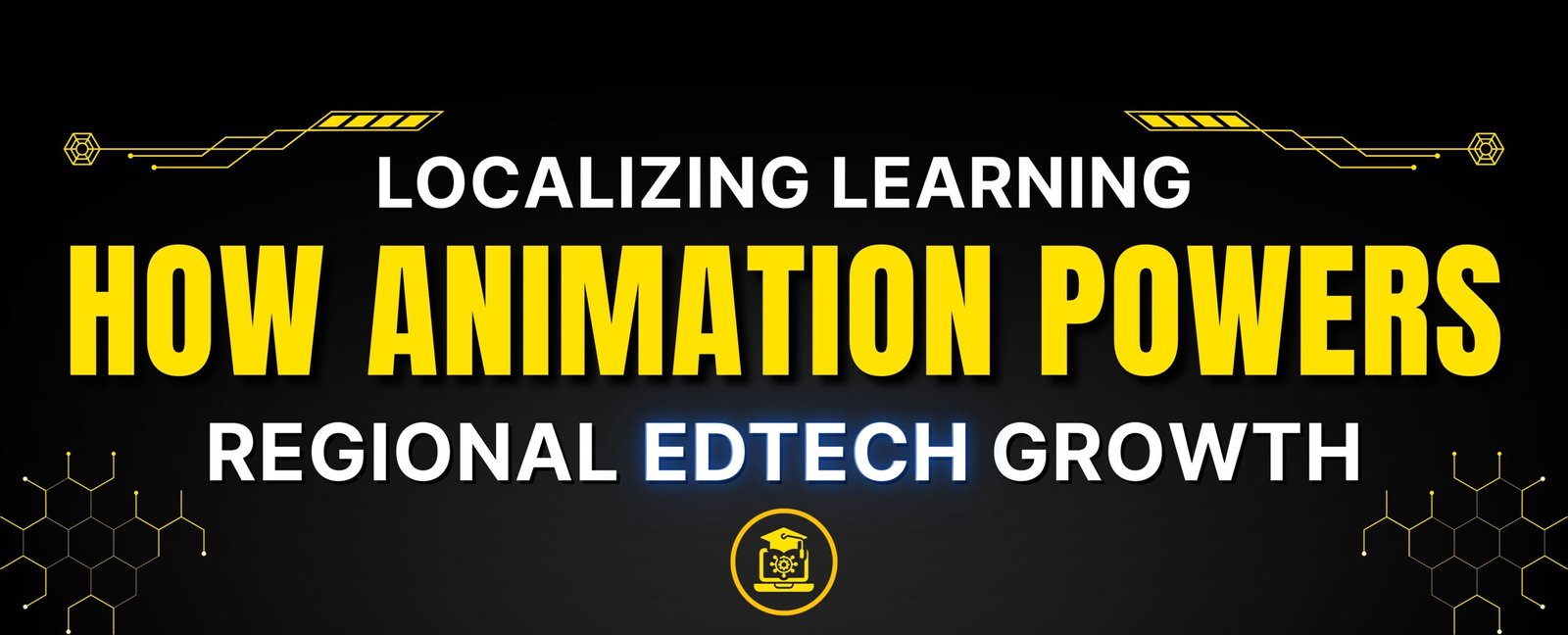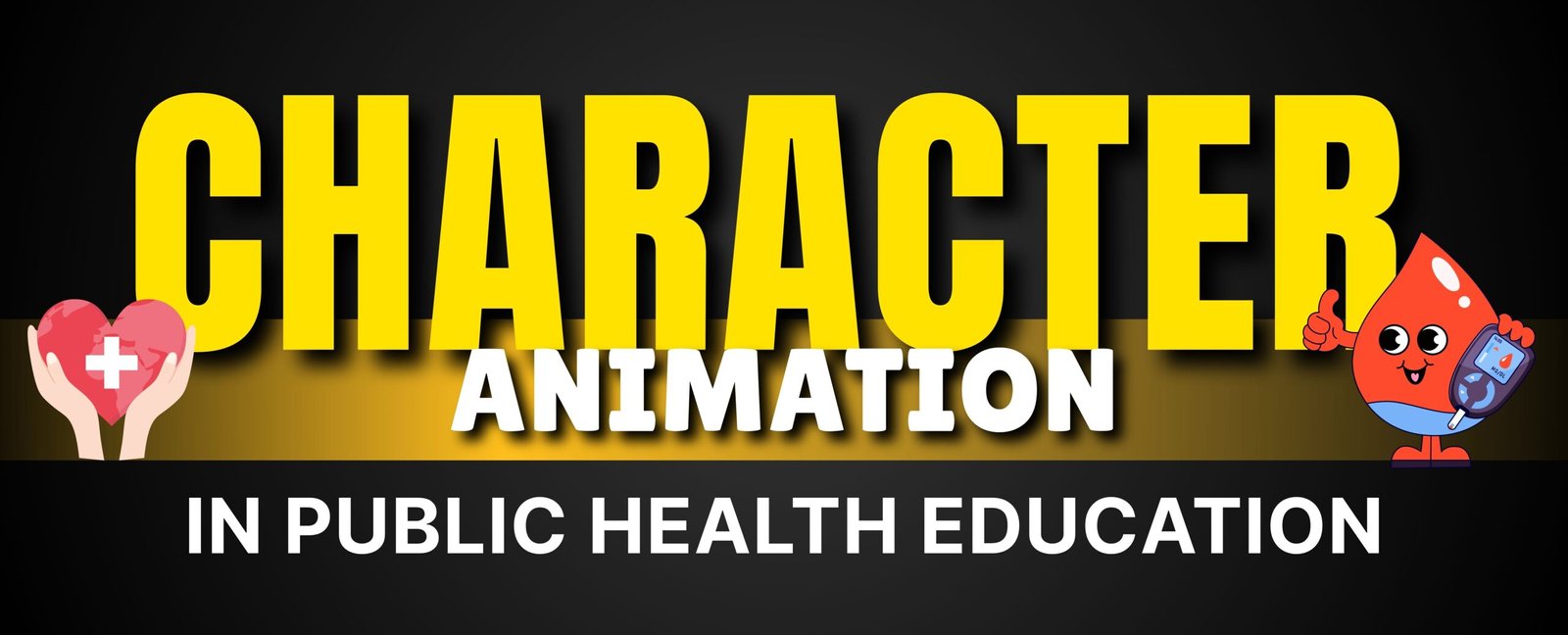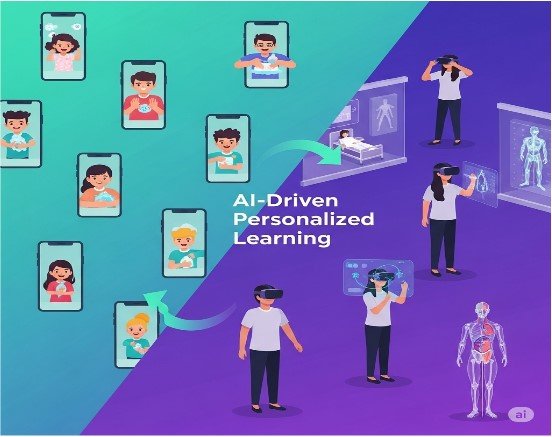Introduction
India’s education sector has seen a massive surge in digital learning tools, especially in regional and non-English-speaking pockets. While urban schools and private institutions have embraced online platforms early, the real momentum is now visible in Tier 2 and Tier 3 towns. Here, animation in eLearning is not just a creative addition- it has become a catalyst for deeper student engagement and knowledge delivery.
This shift isn’t incidental. It reflects a combination of rising smartphone penetration, improved access to regional content, and an increasing number of companies in India that specialize in animated e-learning videos.
In this blog, we will explore how animation is reshaping regional EdTech growth and why it’s more than just moving pictures on a screen.
Regional Learning Demands Local Language, and Animation Meets the Need
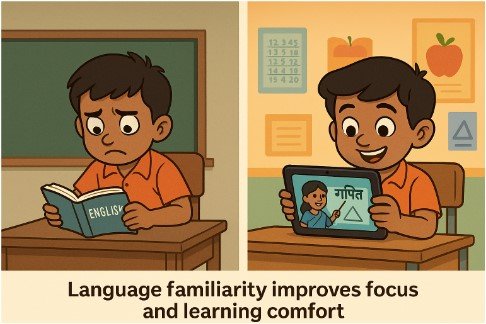
One of the significant roadblocks to effective online education in India has been the language barrier. According to the 2021 Census projections, over 90% of Indians speak a language other than English at home. Animation provides an effective medium to deliver curriculum-based content in mother tongues without losing clarity or engagement.
E-learning animation often uses relatable characters, settings, and accents to build familiarity. Whether it’s a science lesson in Marathi or a math module in Bengali, 2d animation characters in explainer videos also help bridge the linguistic gap without compromising on quality with the help of storytelling.
A report by KPMG and Google highlighted that digital content in regional languages drives nearly 70% of consumption among new internet users in India. This indicates a demand for tailored content, something that e-learning animation is ideally suited to deliver.
Animated Videos Simplify Complex Concepts
In rural classrooms, traditional textbooks alone may not fully support understanding, especially in subjects like Physics, Biology, or Geography. This is where animated videos prove useful.
Animations are often used to depict abstract scientific theories, such as how blood flows through the heart or how electricity is generated in a hydroelectric dam. When students see these in motion, comprehension becomes easier.
E-learning companies in India increasingly rely on motion graphics, whiteboard animation, and 3D modeling to help explain textbook concepts. With clear narration in regional languages and visual sequencing, students grasp topics that would otherwise remain confusing.
According to a 2023 EdTech review by the Observer Research Foundation, students who watched animated e-learning videos for lessons performed 23% better in assessments than those relying solely on textual content. This also highlights why animation dominates training in Indian edtech space.
Building an Emotional Connection Through Storytelling
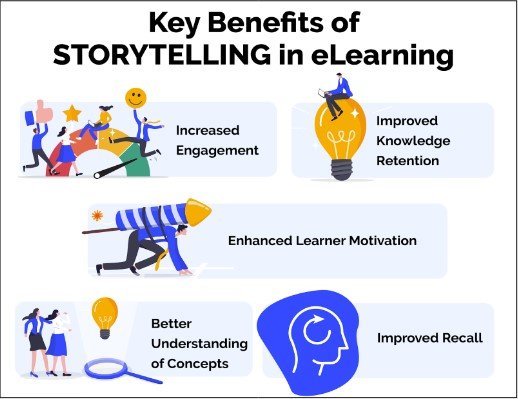
What makes a student sit through an entire lesson, especially on a phone or tablet? The answer lies in emotional connection. Animation taps into this by presenting characters, emotions, and relatable scenarios that mimic real-life experiences.
E-learning animation doesn’t just present information- it tells stories. A chapter on civic responsibility, for example, can follow a fictional child navigating challenges in their village and making decisions that reinforce learning outcomes.
This method is particularly useful in moral science, social studies, and health education. It creates lasting impressions and encourages reflection, something rote learning rarely achieves.
EdTech start-ups now make animated videos tailored for specific regions, using cultural references and behavioral cues familiar to the learners. These aren’t generic animations repurposed across languages- they are crafted for context.
Accessibility Without Heavily Relying on Reading
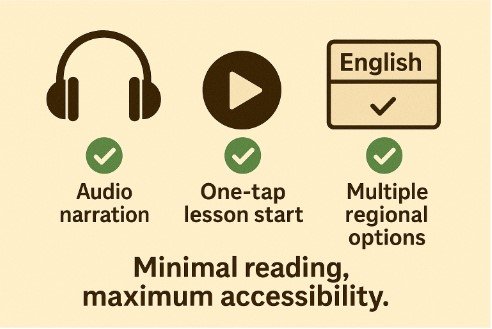
India’s literacy rate stands at around 77.7% as per National Statistical Office (NSO) data from 2021. However, functional literacy, especially reading comprehension in English, is far lower in rural areas.
E-learning animation videos help bypass this challenge by minimizing dependence on reading. Narration, dialogue-based lessons, and voiceovers in regional tongues allow learners to absorb content even with minimal reading skills.
This accessibility opens up digital learning to first-generation learners and those from under-resourced schools. Students watch, listen, and learn, without needing to decode long paragraphs or complex terms.
Not only platforms, rather universities that decide to make animated videos to present their core offering also report higher student retention. For example, a leading eLearning company in India observed that completion rates of modules with animated explanations were 38% higher than those using slides and text-based PDFs.
Supporting Teachers in Resource-Poor Settings
Teachers in regional schools often juggle multiple responsibilities and lack access to modern teaching aids. Animation steps in as an effective teaching assistant.
To support consistent and curriculum-aligned delivery, many education departments and institutions now collaborate with animated eLearning video production services that offer content tailored to specific regions and subjects.
When teachers use e-learning animation videos during class, they shift from being sole instructors to facilitators. This reduces the burden of explaining every topic manually and also ensures consistent content delivery across classrooms.
Several state government initiatives now include animated content in their teacher support portals. For example, Maharashtra’s ‘DIKSHA’ platform provides video-based lessons for teachers in Marathi, helping them grasp subjects better and deliver lessons with more confidence.
E-learning companies in India are also working directly with state education departments to create curriculum-aligned content in Tamil, Hindi, Kannada, and other regional languages, ensuring teachers have access to structured, visual teaching aids.
Unexplored Dimensions of Animation in Regional EdTech Growth
While animation’s role in regional language accessibility and content engagement has been widely acknowledged, there are several nuanced aspects that deserve attention for a more complete understanding of its value in Indian eLearning ecosystems.
Visual Learning Backed by Cognitive Science
Animations engage both the eyes and ears. This aligns with the dual coding theory, which shows that combining visuals and audio boosts retention. For regional students, this multi-sensory approach makes learning easier, especially for those less comfortable with text.
Regional Innovation that Scales Beyond Borders
Solutions built for local regions—like low-data animations or voice-based navigation—often inspire global EdTech design. What starts as a regional need can evolve into widely used features across other language markets.
Community Building Through Shared Animated Experiences
E-learning animation helps regional learners connect by showing relatable characters, accents, and local settings. These shared stories create a sense of belonging, even in solo digital learning environments.
Measurable Success in Multilingual Markets
One Indian eLearning firm grew from 15,000 to 150,000 users in a year by adding animated lessons in six regional languages. Localized video and animation, distributed via YouTube and mobile apps, proved more effective than traditional content in rural areas.
Interactive Learning and Gamification through Animation
Gamified elements like animated quizzes, progress badges, and avatars in local languages keep students engaged. E-learning platforms that make animated videos infusing interactivity for fun learning, often see better student motivation and longer session times.
Enhancing Digital Literacy through Animated Tutorials
For students and parents unfamiliar with apps, animation helps explain steps visually—like logging in or selecting a course. Simple animated guides in local languages make online learning tools easier to use, especially in low-digital-literacy households.
The Future of Learning is Visual, Local, and Accessible
Animation is no longer a support tool; it is central to digital learning strategies, especially in regional India. It accommodates language diversity, enhances concept clarity, and builds deeper emotional engagement with content.
The growth of e-learning animation in India reflects a broader trend: students don’t just want content, they want context, connection, and clarity.
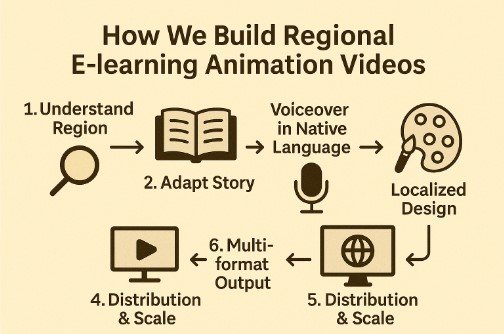
To make this happen, the focus must remain on creating high-quality E-learning videos that reflect local realities and respect linguistic diversity. This approach will ensure that digital education does not remain confined to urban or English-speaking learners.
As internet access expands and regional aspirations grow, animation will continue to power the next wave of EdTech success stories, ones rooted in inclusion, innovation, and impactful storytelling.
FAQs
1. What is the role of animation in regional education content in India?
E-learning animation videos help deliver lessons in local languages using relatable visuals and voiceovers. This format works well for students in regional areas who prefer learning through storytelling and simplified visuals instead of dense text.
2. How do e-learning companies in India use video and animation to support schools?
Many e-learning companies in India develop region-specific content using video and animation to match local curriculum standards. These videos support teachers by explaining complex topics visually, saving time, and improving classroom engagement.
3. Why should educators make animated videos for their digital learning modules?
To improve student attention and clarity, educators often choose to make animated videos. Animation makes subjects like science, history, and health more engaging and easier to follow, especially when presented in the learner’s native language.
4. Are e-learning animation videos suitable for students with low reading skills?
Yes, e-learning animation is helpful for learners who face challenges with reading. These videos rely more on spoken words and visuals, making it easier for students to grasp key ideas without needing to read long paragraphs.
Conclusion
E-learning animation has quietly become the backbone of regional education content delivery. Whether it’s a child in rural Rajasthan watching a story-based lesson on hygiene or a student in Assam exploring physics through animated models, video and animation are reshaping how India learns.
With more efforts to localize and simplify learning through visuals, the journey of digital education is poised to become more inclusive and effective. For those looking to make animated videos with real impact, the opportunity lies in blending storytelling with substance and visuals with values.
If you’re an educator, content creator, or part of an e-learning company in India, animation isn’t just an option. It’s the medium that speaks to India’s future learners.
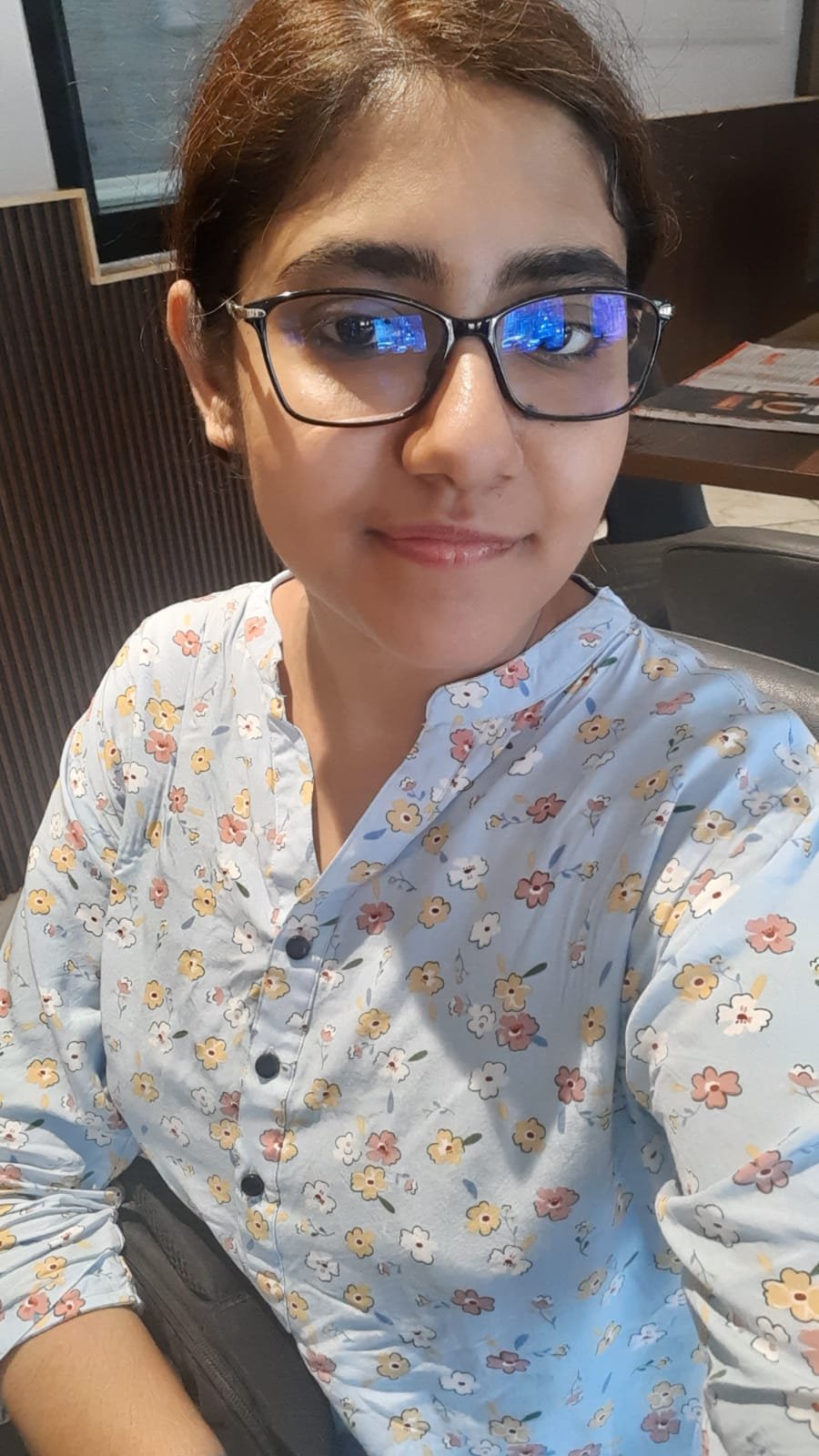
By day I create engaging content along with infusing high-volume, low-competition keywords strategically so that it gets loved by you and Google Crawler. Off the clock? I scroll for fresh ideas. (Don’t judge, gotta fuel the creativity!)

